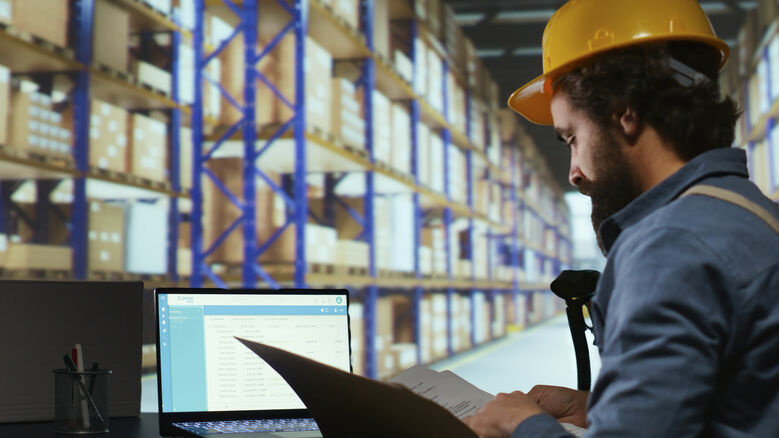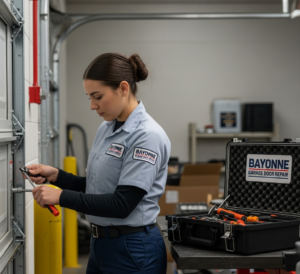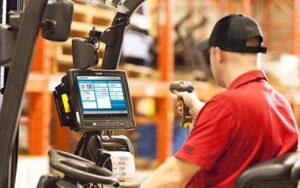Why Real-Time Tracking Is Crucial In Freight Management Systems
Real-time tracking has become an essential part of freight management systems in today’s quickly changing logistics environment. Real-time tracking is now a need rather than a luxury because of the exponential growth in demand for speed, efficiency, and transparency in the flow of commodities. Businesses may increase customer satisfaction, keep ahead of the curve, and streamline operations with this feature. It’s a wise, progressive step to incorporate real-time tracking into your freight management softwares, whether you’re handling local deliveries or international cargo.
The Increasing Significance Of Real-Time Monitoring
The need for effective logistics has grown dramatically as a result of global and e-commerce developments. Customers now demand more transparency and quicker deliveries, therefore, companies need technologies that let them react quickly to problems. One such solution that enables companies to satisfy contemporary logistical demands while reducing inefficiencies is real-time tracking.
Real-time tracking is revolutionary in goods management systems for the following reasons:
1. Increased Transparency And Visibility
Businesses can keep an eye on shipments at every point of the route using real-time tracking. All parties involved—shippers, carriers, and customers—are guaranteed to be aware of the location and condition of the items because of this visibility. Customers are more assured of the service when there is this level of openness, and companies are able to proactively handle any interruptions.
For example, businesses can give clients accurate delivery schedules if they know the precise location of a package. Additionally, it can assist in detecting delays, facilitating prompt resolution and improved communication.
2. Enhanced Efficiency In Operations
Route planning and inventory management are seamlessly integrated with real-time tracking through advanced freight management softwares, ensuring efficient and streamlined logistics operations.
Businesses can save time and money on gasoline by
- Optimising delivery routes by tracking vehicles.
- Use real-time updates to reassign resources.
- Cut down on idle time and optimise processes.
For instance, drivers might choose alternate routes and prevent delays by using real-time data to notify them of traffic conditions.
3. Improved Experience For Customers
Customers of today need information on the status of their orders in addition to timely delivery. Businesses may match this expectation by delivering precise and timely information thanks to real-time tracking. Customers are kept updated throughout the delivery process by features like real-time maps, ETAs, and immediate notifications.
Such openness fosters trust in addition to increasing client happiness. Proactive communication might be crucial in a field where delays and interruptions are frequent occurrences.
4. Security And Risk Mitigation
There are many hazards associated with shipping goods, including loss, damage, and theft. By giving companies total control over their shipments, real-time tracking helps to reduce these risks. Real-time tracking systems can promptly notify the appropriate parties in the event that a truck veers off course or a package disappears, allowing for prompt action.
Furthermore, tracking systems can offer information about handling procedures, guaranteeing that products are delivered in the proper circumstances. This is especially important for businesses that deal with high-value items, medications, or perishable goods.
5. Making Decisions Based On Data
A multitude of data is produced by real-time tracking systems, which can be examined to enhance logistical plans. Companies can utilise this information to spot trends, foresee problems, and improve performance all around.
Businesses can save money and use resources more effectively by using key parameters like delivery times, route efficiency, and vehicle utilisation to guide their decision-making.
6. Adherence To Regulations
Businesses are frequently required by governments and regulatory agencies to keep documentation of their logistics activities. By offering thorough documentation of shipment movements, driver actions, and delivery timeframes, real-time tracking makes compliance easier.
Businesses may stay out of trouble and keep a positive reputation with regulatory bodies by automating the tracking and reporting process.
7. Flexibility And Scalability
Businesses’ logistics requirements get more complicated as they expand. Because real-time tracking solutions are scalable, businesses of all sizes can benefit from using them. These systems adjust to shifting needs while maintaining steady performance, whether they are in charge of a small fleet or an international network.
Additionally, real-time tracking helps companies stay adaptable when faced with unforeseen obstacles. For instance, tracking systems can instantly recommend alternate routes in the event that traffic or bad weather disrupt a delivery route.
Real-Time Tracking Implementation: Difficulties And Solutions
Although there is no denying the advantages of real-time tracking, putting such systems into place is not without its difficulties. These consist of:
- Price: For small enterprises in particular, the initial outlay for tracking systems might be substantial.
- Integration: It can be difficult to guarantee interoperability with current freight management systems.
- Training: To effectively use the new system, employees must receive training.
The long-term advantages, however, exceed these difficulties. Real-time tracking capabilities are now included into a lot of freight management software programs, which makes integration easier and lowers expenses. Cloud-based solutions also help firms scale their operations and keep up with the newest technological advancements.
Real-Time Tracking’s Future In Freight Management
Real-time tracking is expected to become even more important in the future as the logistics sector continues to change. It is anticipated that cutting-edge technology like blockchain, artificial intelligence, and the internet of things will improve tracking even more.
- IoT devices can keep an eye on variables like humidity and temperature to make sure that cargo is carried in the best possible circumstances.
- Artificial intelligence systems are able to anticipate possible delays and suggest preventative measures.
- By producing tamper-proof records, blockchain technology can increase the security and transparency of goods monitoring.
These developments will improve real-time tracking’s accessibility, accuracy, and efficiency, helping companies maintain their competitive edge in the market.
Conclusion
In conclusion, real-time tracking is an essential part of modern commodities management systems. It provides visibility, improves efficiency, raises customer happiness, and makes better decisions easier. While there may be an initial cost involved in implementing real-time tracking, the benefits outweigh the drawbacks overwhelmingly.
As logistics challenges continue to evolve, companies that adopt real-time tracking and integrate it into their freight management strategy will be better positioned to prosper in a more competitive environment.
Read more: The Future of Digital Freight Forwarding: What Businesses Need to Know













Post Comment